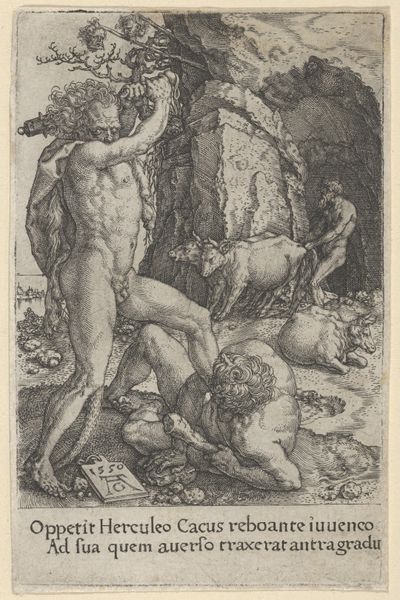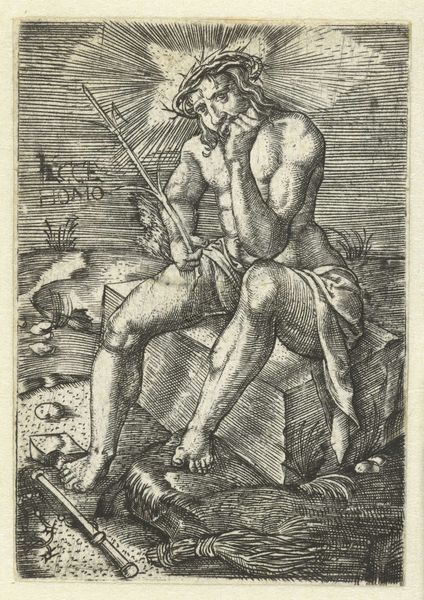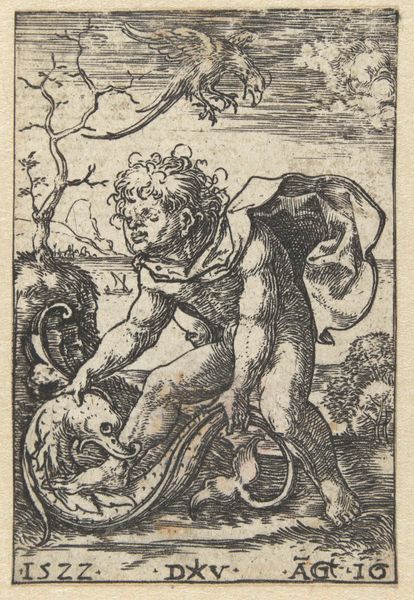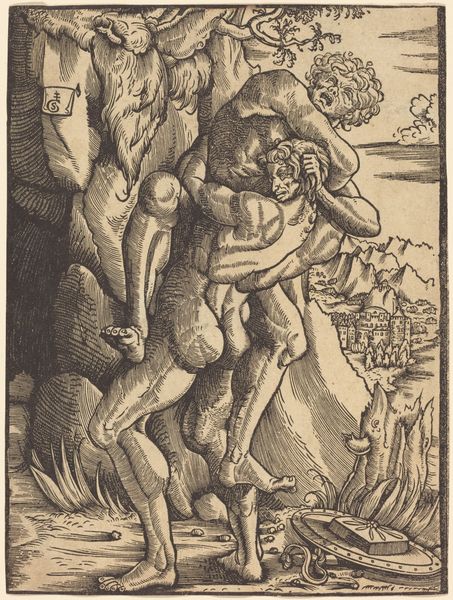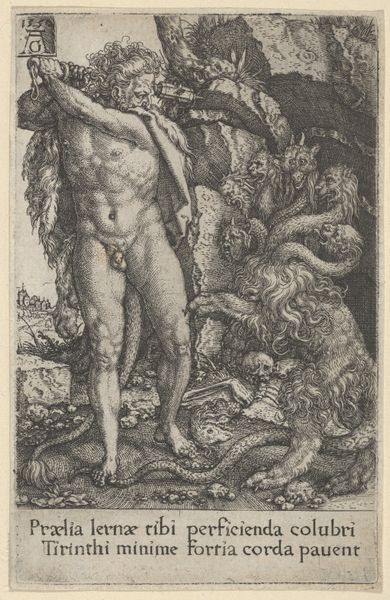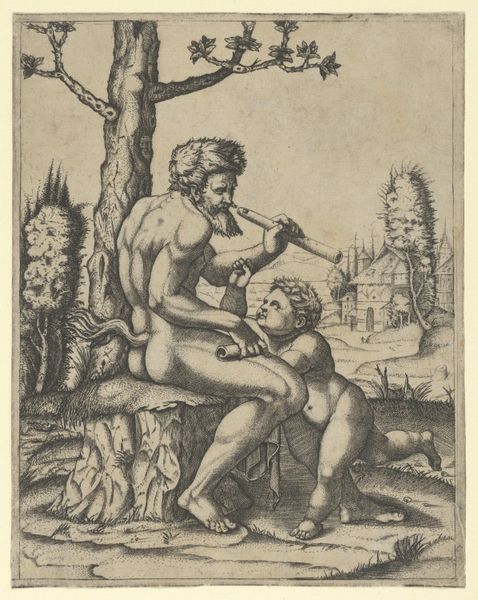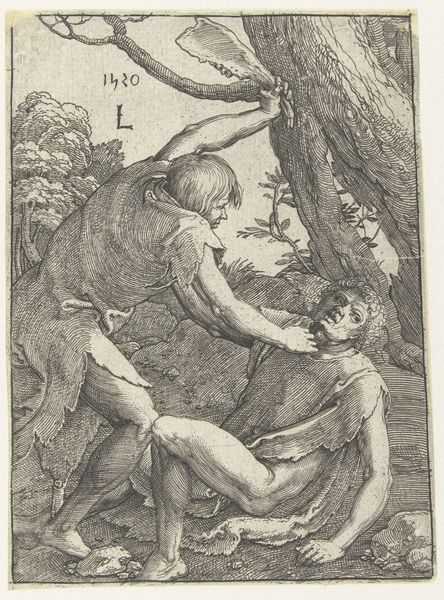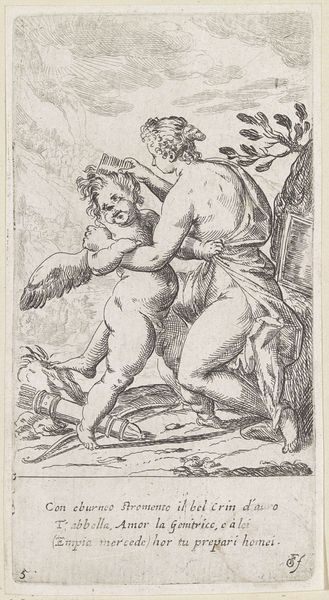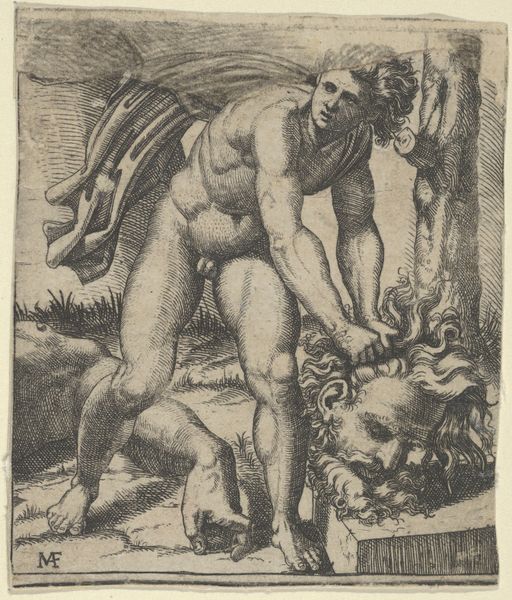
drawing, print, engraving
#
portrait
#
drawing
# print
#
figuration
#
line
#
genre-painting
#
history-painting
#
northern-renaissance
#
engraving
Dimensions: sheet: 4 5/8 x 3 1/4 in. (11.7 x 8.3 cm)
Copyright: Public Domain
Curator: Before us is Albrecht Dürer’s chilling engraving, “Cain Killing Abel,” created in 1511 and now residing at The Metropolitan Museum of Art. Editor: Its immediately visceral. That raw aggression is almost tangible, jumping off the paper, heightened by the stark contrasts and incredibly fine linework of the engraving. Curator: Dürer masterfully encapsulates a pivotal moment in religious history, rendering the fratricide with striking immediacy. Cain looms, gripping an axe, poised to strike, while Abel lies defenseless. The scene, although brutal, has a kind of twisted elegance through the stylized gestures. Editor: Agreed, but it's the rendering of texture here that I find captivating. Look at the bark of that tree, the meticulously hatched musculature—every detail emphasizes the composition's intensity. It's not just about narrative but the almost obsessive focus on surface and form. What do you think is Durer trying to signify using that style of detail? Curator: Well, given that the story is one of betrayal, resentment, and the consequences of divine rejection, it stands as an archetype. I think that Dürer is tapping into an old symbolic theme in a newly accessible way with print. Through Cain, he shows the corruption and jealousy which is the root of sin; in contrast, Abel, the innocent victim and prefigures later sacrifices like Christ, it serves as both a warning and a redemptive narrative. Editor: So, almost using the scene as an allegory to explain a lesson about sacrifice. The way those lines create shadows to increase volume adds to this scene of tension that is enhanced because he made use of engraving, one of the few printing techniques to create a true black, by using acid, without having to render the design from a highpoint, is a neat analogy about truth through light. Curator: Perhaps… In any case, this print allowed the story of sin and consequences to become available for the general public through art, where those previously only had it through limited-access biblical readings, it also marked Durer himself, given that you can also read his logo below the engraving as the brand of quality the artwork carries. Editor: Exactly, seeing the material and symbolic blend into a final mark is a very revealing process of the value art carries, it is a visual and sensory encounter of both horror and technique and it makes you admire Dürer all the more.
Comments
No comments
Be the first to comment and join the conversation on the ultimate creative platform.
